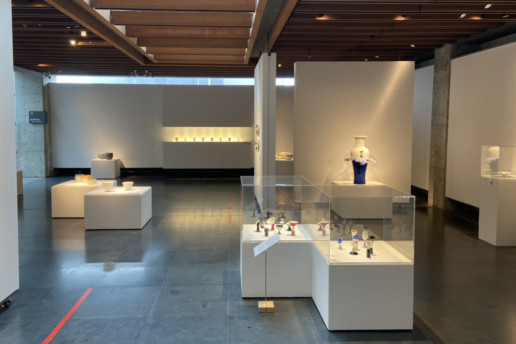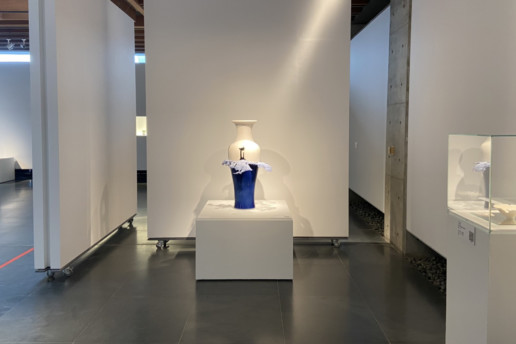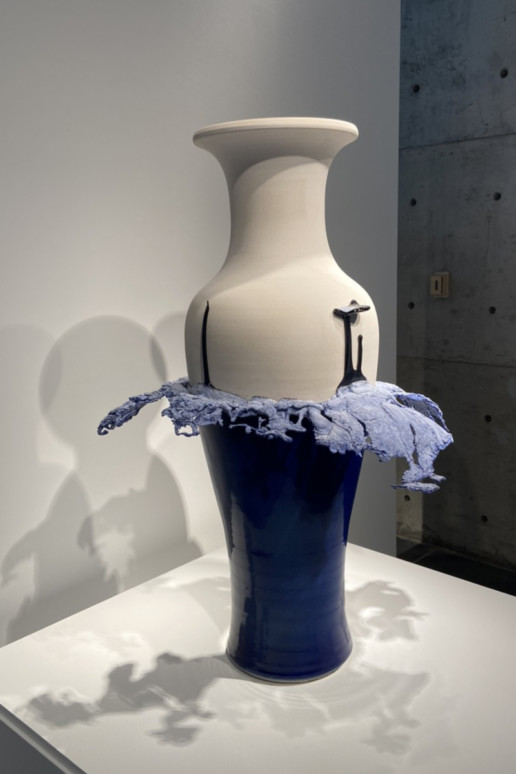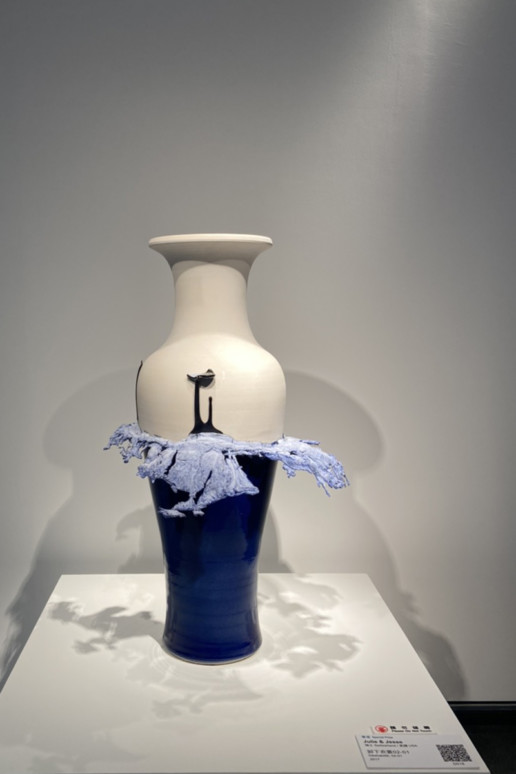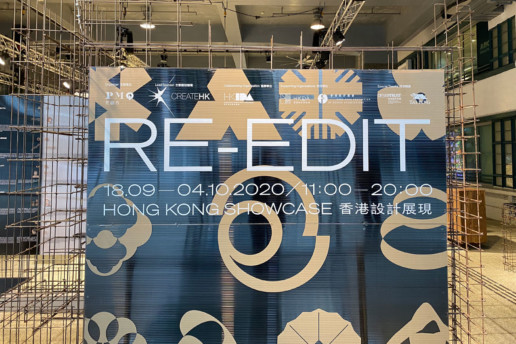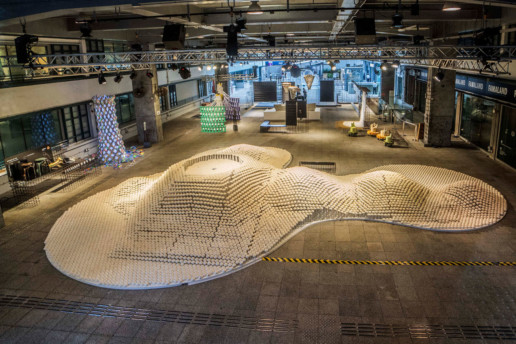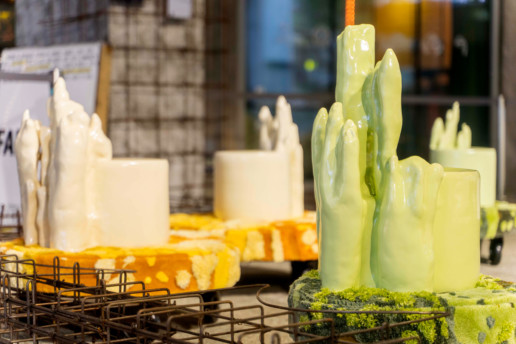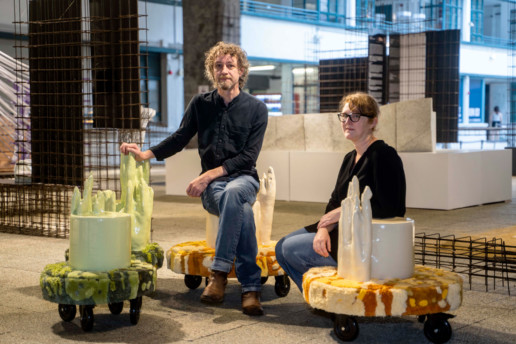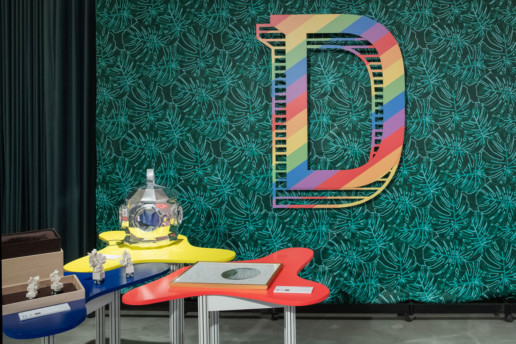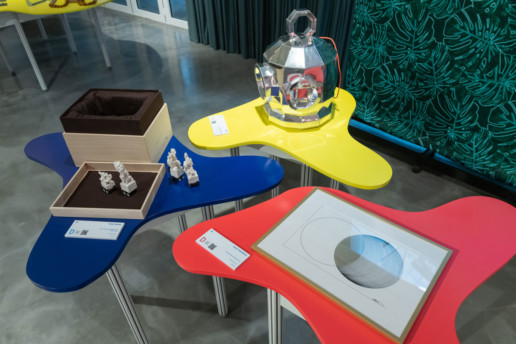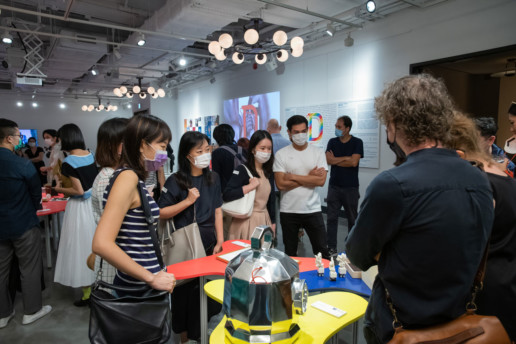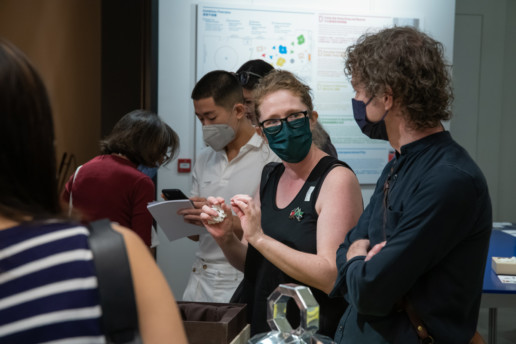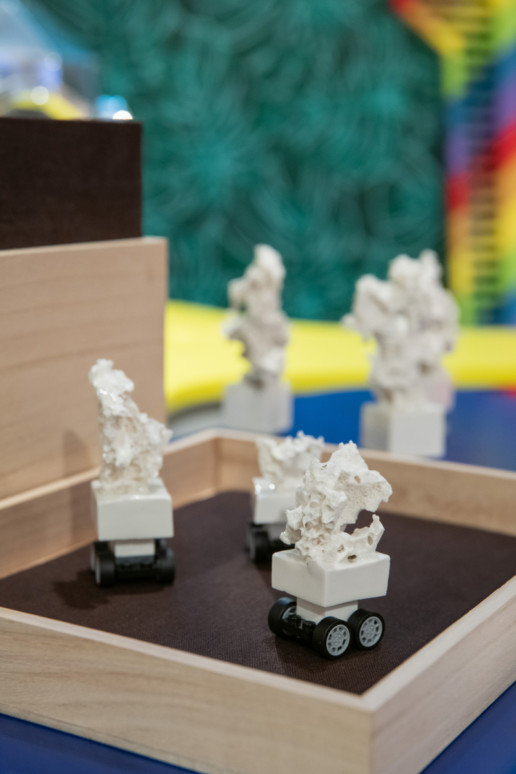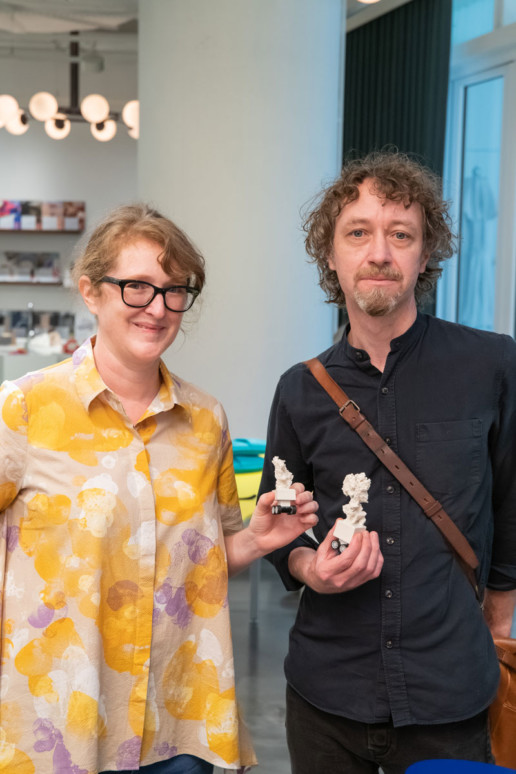Taiwan Ceramics Biennale
Taiwan Ceramics Biennale
New Taipei City Yingge Ceramics Museum
20 November 2020–09 May 2021
Photo courtesy: New Taipei City Yingge Ceramics Museum
The Biennale has its eighth edition in 2020. It provides a display platform for contemporary ceramic artists at home and abroad. In the form of artwork competition, this year’s Biennale called for artists of all nationalities and in all ages to submit ceramic-based artwork (i.e. ceramic is required to account for more than 50% of all materials). The Biennale received 732 entries from 58 countries across five continents, reaching its highest number in 16 years.
This year’s Biennale invited senior ceramicists, professors of ceramic art, curators, and directors of arts and cultural organization from the United Kingdom, France, Japan, Indonesia and Taiwan to form an international panel. The jury members are Yulin Lee, Director of Kaohsiung Museum of Fine Arts; Sandra Benadretti Pellard, Chief curator emeritus of the Magnelli Museum and Ceramics Museum of Vallauris.; Hsin-Tian Liao, General-Director of National Museum of History; Ching-Yuan Chang, Professor at the Tainan National University of the Arts; Martin Smith, Professor Emeritus of Ceramics and Glass at the Royal College of Art; Toshio Matsui, Director of the Shigaraki Ceramic Cultural Park; and Arief Yudi, Curator of the 5th Jakarta Contemporary Ceramics Biennale. They selected the winners after preliminary and final selections.
The expressiveness of the rhythm of clay explains the broad usage and tradition of pottery making. Clay gives shape to the beauty of art and things that touch our hearts. Clay links nature and civilization. Clay evolves as the world keeps rolling on. And clay reflects the context of the times in which it takes shape. All of these attributes of clay are revealed in the Taiwan Ceramics Biennale. The exploration and experiment of materials for ceramic art creation are not entirely a dichotomy between “ceramic-oriented crafts” and “ceramic-made conceptual creation”. From the perspective of “art being an inevitable product of human society” and “clay itself being the characteristic of ceramic art”, ceramic art offers viewers an aesthetic experience. Even though proficient and superlative techniques are the most important foundation in the process of ceramic art creation, it all comes back to human in the end. In fact, everything is related to one’s daily experiences, introspection and feelings, which nourishes the creativity of artists/creators.
The Taiwan Ceramics Biennale gathers refined contemporary ceramic art pieces from the five continents of the world. Here we see ceramic artists all around the world making their utmost efforts to accurately depict and reflect social reality with their proficient skills and various combinations of ceramic raw materials, glazes and firing methods. These artists leave traces of touch in their finished works. They incorporate new aesthetics and worldviews. They go beyond traditional boundaries and limitations. They also convey their ruminations about issues of this rapidly changing world. In the Biennale, they present 109 exquisite works of ceramic art, expressing themes and narratives which are technical, experimental, conceptual, classical and documental. They will offer viewers a space for diversity of dialectics.
Aesthetics and philosophy from a contemplative understanding of objects──Nature’s geometric phenomenon and power withstand adversity; the fragile ecosystems of animals, plants and human evolve to respond to environmental changes. These conceptions and movements are strongly revealed in the works of art. These artists persist, strive, and advocate in life. They themselves explore the equilibrium in the connection between nature and culture (civilization), and add power and appeal to their works by covering the topics of society, ecology and vitality.
Meticulous structures and aesthetic lines──The creators spend a long time on blending glazes. They employ various techniques, both new and old, such as throwing and pinch, to accurately extend, shape, and arrange the solid and thick lumps of clay in their hands. Their works show either container-like meticulous structures, abstract aesthetic lines, or rigorous arrangement. These works outline uninterrupted continuity and intuitive coordination. Some of them reveal the lightness and fragility of ceramics while others reveal the stability and simplicity of ceramics.
Exploration and experiments on technical and material limitations──With respect to the intrinsic strength of clay material, some artists allow clay to work spontaneously, and others try to capture and innovate their unique visual languages, embodying the limitations of materials and human senses. Sharp contrasts are formed between enormous volume and light texture, as well as hardness and fragility. Clay leaves ashes and marks after fired at a high temperature. The transfer and combination of forms—three-dimensional and two-dimensional—and the controllability and fortuity of form expression become a creative language unique to ceramics. And the results are quite intriguing.
Dialectics of the essence of art in tradition and innovation──The dialectical study of tradition and innovation is something no one can get away from when examining the development of any forms of art. Here are some pieces of art in which the artists not only carry traditional ceramic skills but also incorporate the essence of modern art. These works seem to be succinct and quiet, but they clearly demonstrate their creators’ mastery of materials, which grants contemporaneity to ceramics.
Taiwan Ceramics Biennale
New Taipei City Yingge Ceramics Museum
20 November 2020–09 May 2021
Photo courtesy: New Taipei City Yingge Ceramics Museum
The Biennale has its eighth edition in 2020. It provides a display platform for contemporary ceramic artists at home and abroad. In the form of artwork competition, this year’s Biennale called for artists of all nationalities and in all ages to submit ceramic-based artwork (i.e. ceramic is required to account for more than 50% of all materials). The Biennale received 732 entries from 58 countries across five continents, reaching its highest number in 16 years.
This year’s Biennale invited senior ceramicists, professors of ceramic art, curators, and directors of arts and cultural organization from the United Kingdom, France, Japan, Indonesia and Taiwan to form an international panel. The jury members are Yulin Lee, Director of Kaohsiung Museum of Fine Arts; Sandra Benadretti Pellard, Chief curator emeritus of the Magnelli Museum and Ceramics Museum of Vallauris.; Hsin-Tian Liao, General-Director of National Museum of History; Ching-Yuan Chang, Professor at the Tainan National University of the Arts; Martin Smith, Professor Emeritus of Ceramics and Glass at the Royal College of Art; Toshio Matsui, Director of the Shigaraki Ceramic Cultural Park; and Arief Yudi, Curator of the 5th Jakarta Contemporary Ceramics Biennale. They selected the winners after preliminary and final selections.
The expressiveness of the rhythm of clay explains the broad usage and tradition of pottery making. Clay gives shape to the beauty of art and things that touch our hearts. Clay links nature and civilization. Clay evolves as the world keeps rolling on. And clay reflects the context of the times in which it takes shape. All of these attributes of clay are revealed in the Taiwan Ceramics Biennale. The exploration and experiment of materials for ceramic art creation are not entirely a dichotomy between “ceramic-oriented crafts” and “ceramic-made conceptual creation”. From the perspective of “art being an inevitable product of human society” and “clay itself being the characteristic of ceramic art”, ceramic art offers viewers an aesthetic experience. Even though proficient and superlative techniques are the most important foundation in the process of ceramic art creation, it all comes back to human in the end. In fact, everything is related to one’s daily experiences, introspection and feelings, which nourishes the creativity of artists/creators.
The Taiwan Ceramics Biennale gathers refined contemporary ceramic art pieces from the five continents of the world. Here we see ceramic artists all around the world making their utmost efforts to accurately depict and reflect social reality with their proficient skills and various combinations of ceramic raw materials, glazes and firing methods. These artists leave traces of touch in their finished works. They incorporate new aesthetics and worldviews. They go beyond traditional boundaries and limitations. They also convey their ruminations about issues of this rapidly changing world. In the Biennale, they present 109 exquisite works of ceramic art, expressing themes and narratives which are technical, experimental, conceptual, classical and documental. They will offer viewers a space for diversity of dialectics.
Aesthetics and philosophy from a contemplative understanding of objects──Nature’s geometric phenomenon and power withstand adversity; the fragile ecosystems of animals, plants and human evolve to respond to environmental changes. These conceptions and movements are strongly revealed in the works of art. These artists persist, strive, and advocate in life. They themselves explore the equilibrium in the connection between nature and culture (civilization), and add power and appeal to their works by covering the topics of society, ecology and vitality.
Meticulous structures and aesthetic lines──The creators spend a long time on blending glazes. They employ various techniques, both new and old, such as throwing and pinch, to accurately extend, shape, and arrange the solid and thick lumps of clay in their hands. Their works show either container-like meticulous structures, abstract aesthetic lines, or rigorous arrangement. These works outline uninterrupted continuity and intuitive coordination. Some of them reveal the lightness and fragility of ceramics while others reveal the stability and simplicity of ceramics.
Exploration and experiments on technical and material limitations──With respect to the intrinsic strength of clay material, some artists allow clay to work spontaneously, and others try to capture and innovate their unique visual languages, embodying the limitations of materials and human senses. Sharp contrasts are formed between enormous volume and light texture, as well as hardness and fragility. Clay leaves ashes and marks after fired at a high temperature. The transfer and combination of forms—three-dimensional and two-dimensional—and the controllability and fortuity of form expression become a creative language unique to ceramics. And the results are quite intriguing.
Dialectics of the essence of art in tradition and innovation──The dialectical study of tradition and innovation is something no one can get away from when examining the development of any forms of art. Here are some pieces of art in which the artists not only carry traditional ceramic skills but also incorporate the essence of modern art. These works seem to be succinct and quiet, but they clearly demonstrate their creators’ mastery of materials, which grants contemporaneity to ceramics.
Re-edit
Re-edit
PMQ
18 September–04 October 2020
Curated by Amy Chow
This exhibition opens with a poetic fantasy, the Bao Shan, which presents an imaginative landscape inspired by traditional Chinese culture: a ritual of the local fishing communities praying for safety from pirates. It is juxtaposed with ten distinctive designs by some of the most promising design talents of Hong Kong’s next generations. The key themes of the exhibition centre on layers of identity: from identity on a personal level, such as what we think, where we fit in, what we are attached to, and what piques our curiosity and creativity, to brand identity and city status, such as what our social norms are, what the relationship between fast culture and urban life is like, and what propels our designs into the future.
Nowadays, culture, design and business are fields that increasingly overlap as more and more leading businesses take on the humanistic task of re-editing and re-launching values, skills, standards of education and knowledge exchange, and all in all, standards of humanity. The works in this showcase reflect how subjects of identity are shaped by language, place, community, media, technology, social and political consciousness, heritage, sustainability, craftsmanship, customs, beliefs and more.
Re-edit
This exhibition opens with a poetic fantasy, the Bao Shan, which presents an imaginative landscape inspired by traditional Chinese culture: a ritual of the local fishing communities praying for safety from pirates. It is juxtaposed with ten distinctive designs by some of the most promising design talents of Hong Kong’s next generations. The key themes of the exhibition centre on layers of identity: from identity on a personal level, such as what we think, where we fit in, what we are attached to, and what piques our curiosity and creativity, to brand identity and city status, such as what our social norms are, what the relationship between fast culture and urban life is like, and what propels our designs into the future.
Nowadays, culture, design and business are fields that increasingly overlap as more and more leading businesses take on the humanistic task of re-editing and re-launching values, skills, standards of education and knowledge exchange, and all in all, standards of humanity. The works in this showcase reflect how subjects of identity are shaped by language, place, community, media, technology, social and political consciousness, heritage, sustainability, craftsmanship, customs, beliefs and more.
Critically Homemade
Critically Homemade
Studio House, Soho House, Hong Kong
21 September–04 October 2020
Curated by Marisa Yiu
“DESIGN TRUST: Critically Homemade” was born out of a survey within the Design Trust community and to date we have 70+ designers donating their time and creative works towards the programme. Participants include Design Trust grantees, fellows, advisors, Design Trust Futures Studio (DTFS) mentors and mentees, as well as its extended local and international community, to create a prototype (sized 20 x 20 x 20cm max) at home, that responds to and offers solutions to current societal and environmental challenges. Designers were allotted three weeks each to create their object and were encouraged to collaborate and design for a wide-ranging audience.
“DESIGN TRUST: Critically Homemade” will grow into a wider community exhibition and fundraising programme with the prototype launch at Soho House’s House Studio opening to the public on 21st September – 4th October 2020. Following the exhibition, our Design Trust Champion partners will be involved in a vetting procedure to determine prototypes to be further developed. These final objects will be part of a community fundraising programme of designer items and one-of-a-kind experiences. All proceeds will go towards the ongoing funding of Design Trust seed grants in relation to the COVID-19 challenges and provide immediate support to social/design programmes that will benefit the wider community.
Critically Homemade
Studio House, Soho House, Hong Kong
21 September–04 October 2020
Curated by Marisa Yiu
“DESIGN TRUST: Critically Homemade” was born out of a survey within the Design Trust community and to date we have 70+ designers donating their time and creative works towards the programme. Participants include Design Trust grantees, fellows, advisors, Design Trust Futures Studio (DTFS) mentors and mentees, as well as its extended local and international community, to create a prototype (sized 20 x 20 x 20cm max) at home, that responds to and offers solutions to current societal and environmental challenges. Designers were allotted three weeks each to create their object and were encouraged to collaborate and design for a wide-ranging audience.
“DESIGN TRUST: Critically Homemade” will grow into a wider community exhibition and fundraising programme with the prototype launch at Soho House’s House Studio opening to the public on 21st September – 4th October 2020. Following the exhibition, our Design Trust Champion partners will be involved in a vetting procedure to determine prototypes to be further developed. These final objects will be part of a community fundraising programme of designer items and one-of-a-kind experiences. All proceeds will go towards the ongoing funding of Design Trust seed grants in relation to the COVID-19 challenges and provide immediate support to social/design programmes that will benefit the wider community.


